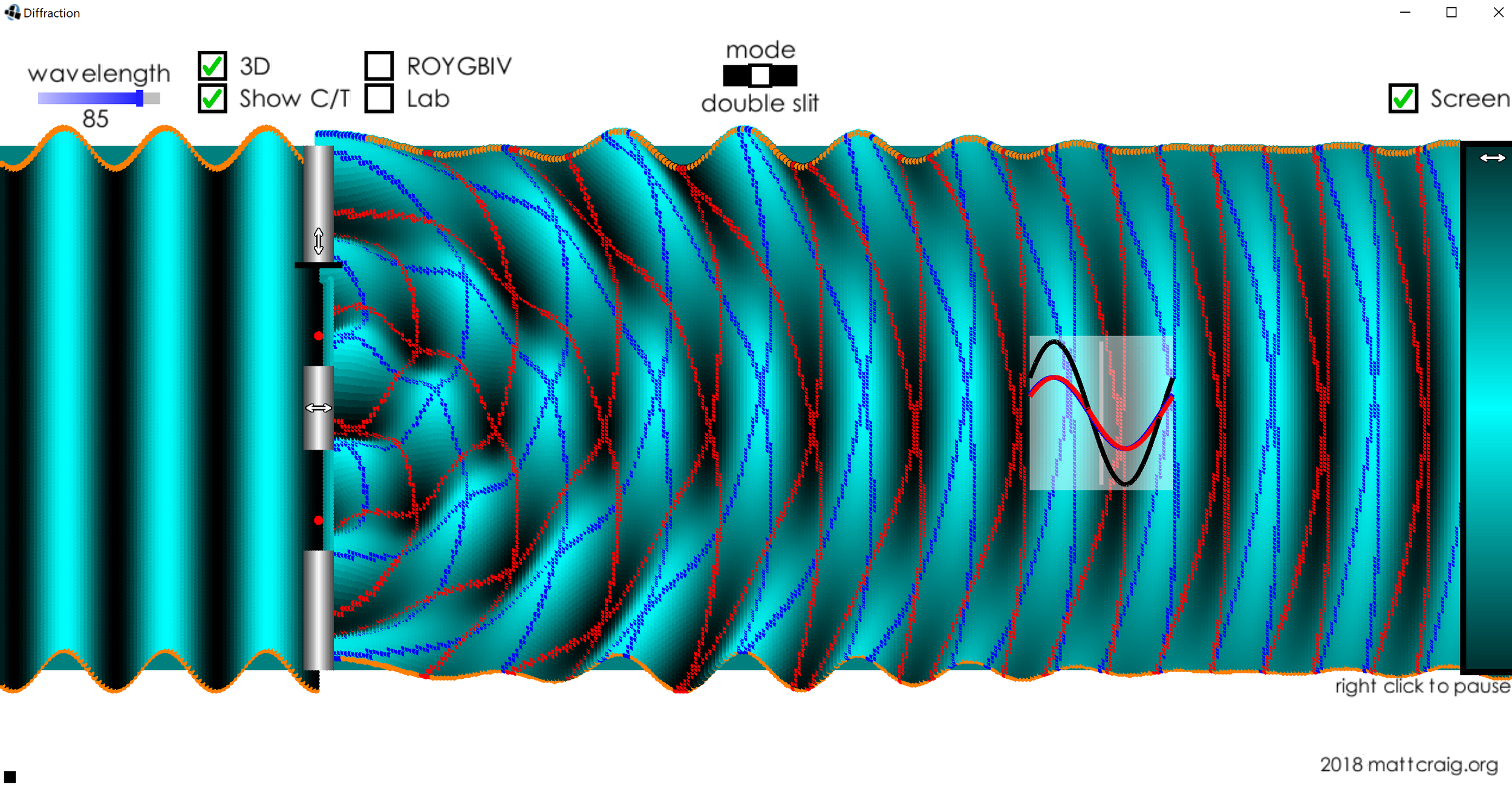11/12 Physics Simulations
Generates and animates 5-section kinematic graphs (d-t, v-t, a-t) for uniform / non-uniform motion.
Simulates projectiles fired at different speeds, angles and elevations, with or without air resistance. Includes a Monkey-Hunter mode and Rifle mode.
Simulates and draws vector-diagrams for a boat crossing a river with a current. The boat can be pointed directly across and pushed downstream, or aimed into the current to end up directly across.
Draw and design your own free body diagrams or inclined plane problems. Calculates the acceleration combined objects on planes.
Perform a force lab involving friction, an inclined plane and a pulley. Weights can be added to the cart or pulley. This simulation also generates a table of values, a position-time graph and a velocity-time graph. A line-of-best-fit can be drawn on the velocity-time graph to calculate the acceleration.
Explore conservation of energy (kinetic, gravitational and elastic), as well as energy lost to friction, by creating tracks of different shapes and rolling the smiley along them.
Perform a lab to calculate the spring constant for a random spring by graphing points and drawing a line of best fit. Also shows harmonic motion with different levels of damping, as well as the energy transformations that take place for a vertically hanging mass on a spring.
What happens when you jump or throw a ball in a rotating space station? This simulation shows you that, while simulating scale radii and rotation speeds of space stations to give different sensations of gravity.
Perform conservation of momentum labs with elastic or inelastic collisions. It also has a ballistics mode, an explosion mode, and a built-in billiards game simulator.
An introductory visual representation of transverse and longitudinal waves, with adjustable amplitude, wavelength and frequency.
Create waves of different shapes to interfere with each other and reflect off of fixed or free ends. Also shows the interference of sinusoid waves, transmission/reflection into denser or less dense media, and standing waves.
See the first six harmonics of standing waves in strings and open/closed air columns. Harmonics can also be added together.
A visualization of the longitudinal wave creating by adding different harmonics. Shows the wave-forms of four instruments. Individual harmonics can be adjusted and acoustic beats can also be shown.
Users can adjust the size of the opening to explore the effect on the diffraction of the wave. Also contains a “double slit” mode that shows the creation of a two-source interference pattern from a plane wave.
Visualize the Doppler Effect for firetrucks and supersonic aircraft. Also simulates the Doppler shifting of spectral lines from a star, and the spectra of nearby galaxies according to Hubble’s law.
Simulates polarized and unpolarized light. Filters can be used to linearly or cicularly polarize the light. Also shows the effect of polarized sunglasses above water.
Simulates thin film interference for adjustable wavelengths/colours of light and adjustable indeces of refraction of the media. Also shows the interference pattern caused by soap rings and Newton’s rings with monochromatic or white light.
Simulates gravitational fields in many different situations, including: binary star systems, the Earth/Moon/ISS/Geosynchronous satellite, comets and Kepler’s second law of motion, the Solar System (including geocentric models and epicycles), a galaxy system of 500 stars, and a cloud of gas condensing under its own gravity to form a star and orbiting bodies.
A simple visual of the Cavendish experiment with values that can be used to calculate G.
Explore magnetic fields caused by bar magnets, straight wires and solenoids. This simulation also shows the motor effect, the generator effect (induction), as well as the magnetization of ferromagnetic materials by aligning the domains.
Perform your own oil drop experiment and determine the elementary charge, an integer between 1 and 9, randomly selected each time the simulation is reset.
Simulates a DC motor and AC generator. Users can adjust the voltage / rotation speed.
See the circular paths formed by charges moving in magnetic fields. The user can fire spheres of different masses and charges with different speeds into a magnetic field and a capacitor (or both) and measure the radii. Also simulates the separation of C12 and C14 isotopes, as well as velocity selectors.
Simulates the expected and actual results from the Michelson-Morley experiment as the user rotates the table with respect to the aether wind.
Simulates time dilation and length contraction from both frames of reference.
Simulates the results of the quantum double slit experiment when the slits are observed or unobserved. Users can fire individual electrons or streams.
Compare the speeds and accelerations of many vehicles and organism in a race to the finish line.





























